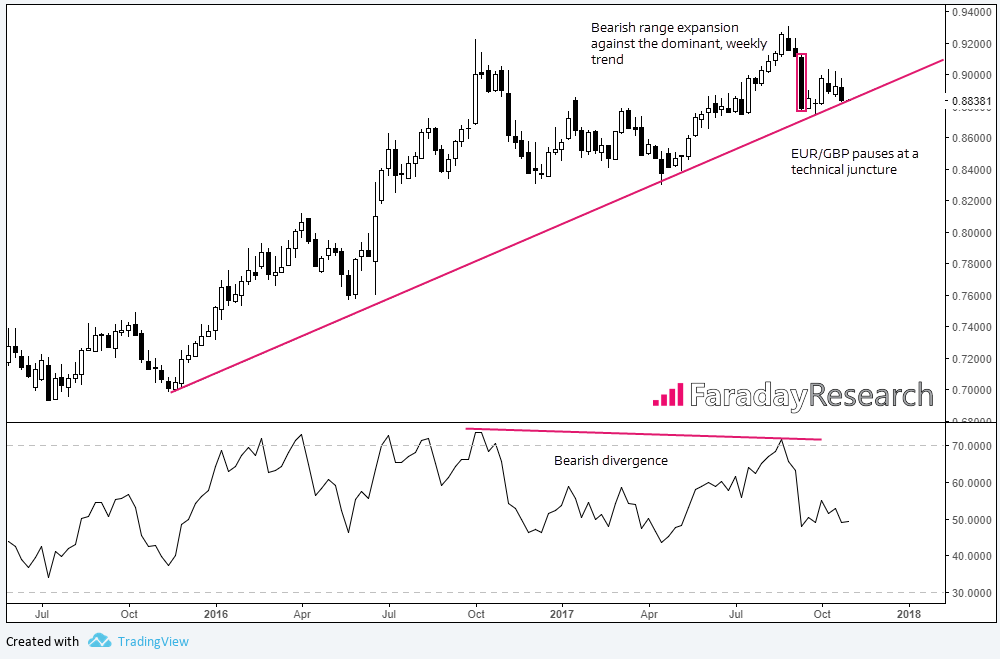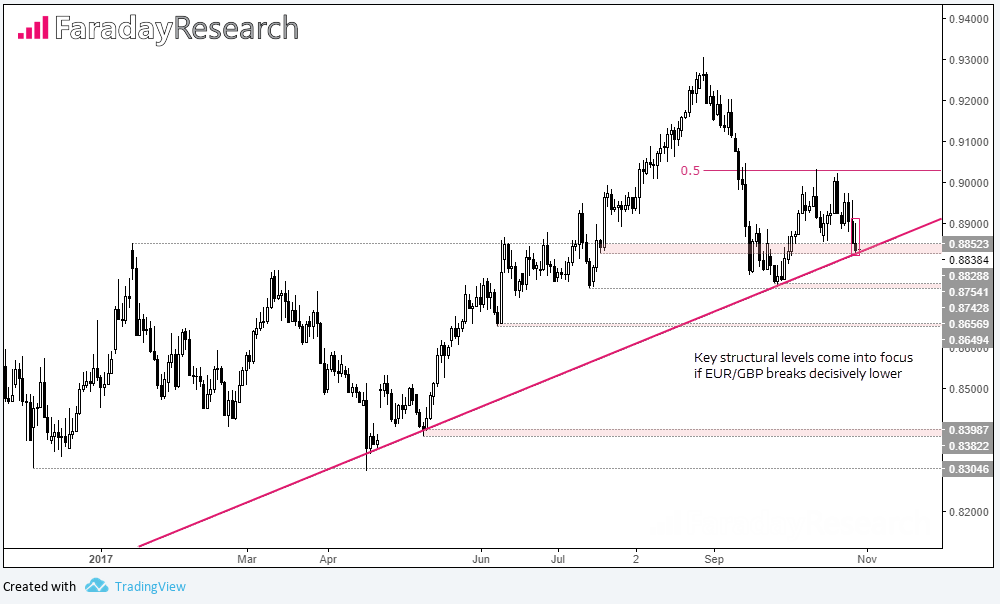Renewed tensions surrounding Catalonia have continued to weigh on the Euro, whilst firmer than expected GDP ahead of this week’s BoE meeting helped partially support the British Pound. That markets are largely expecting a dovish hike from BOE is weighing on GBP elsewhere, but in the case of EUR/GBP unrest in Catalonia has been a net negative and helped push the cross down to a three-week low by Friday’s close.
And perhaps the downside may have been more prominent, were it not for the bullish trendline from the October 2015 obscuring the view for some bears. Yet the reluctance for EUR/GBP to bounce higher also highlights the importance of this technical juncture we find ourselves at. So, how price reacts around this crossroads is key moving forward for bulls and bears alike.

Overall, the weekly chart has been locked in a bullish trend since the 2015 low yet signs of weakness are beginning to appear. That the 2016 and 2017 highs are coupled with a long-term bearish divergence sends an initial warning flag, and the fact that the 2017 high only partially moved above the 2016 high before rolling over raises another. Furthermore, just two weeks after edging up to the 2017 peak, a bearish range expansion week demonstrated a sudden shift in momentum to the detriment of the bulls. And a subsequent lower high, which almost perfectly respected a 50% retracement, has also led us to the bullish trendline.
Putting this all together we could assume that EUR/GBP is indeed on the back-ropes, although we are also acutely aware that the driving forces which led us here could just as quickly reverse. If BOE were to surprise markets and not raise rates, GBP would likely see broad weakness which would at least help support EUR/GBP. We also have to consider how Euro may react if Spain were to finally quash the call for independence in Spain, as this could result in broad Euro strength.

Zooming into the daily chart we can see how prices have hesitated at the trendline as the market pauses for breath. In fact, Friday’s candle was the narrowest range in four sessions to show price compression is underway, which could prove to be the prelude for another bearish range expansion.
If we are to see a decisive break lower on an intraday timeframe, a bearish setup could be considered. Alternatively, price action may continue to compress or coil on the daily timeframe and generate noise around the trendline. Under this scenario, we would still require a decisive break lower to confirm momentum has returned to favour the bears, before a trade is considered.
If we are to be treated to range expansion and lower prices, key structural levels would then become the focus to aid with trade management or profit objectives. Signs of price exhaustion at such levels could prompt a lowering of a stop loss or closure of the trade. Yet lack of exhaustion or, better still, increased bearish momentum assumes another break lower to be the more likely.
If however we are to see current support hold, bullish momentum return and break above Friday’s high, we would prefer to stand aside until momentum on the daily timeframe provides a clearer edge.
